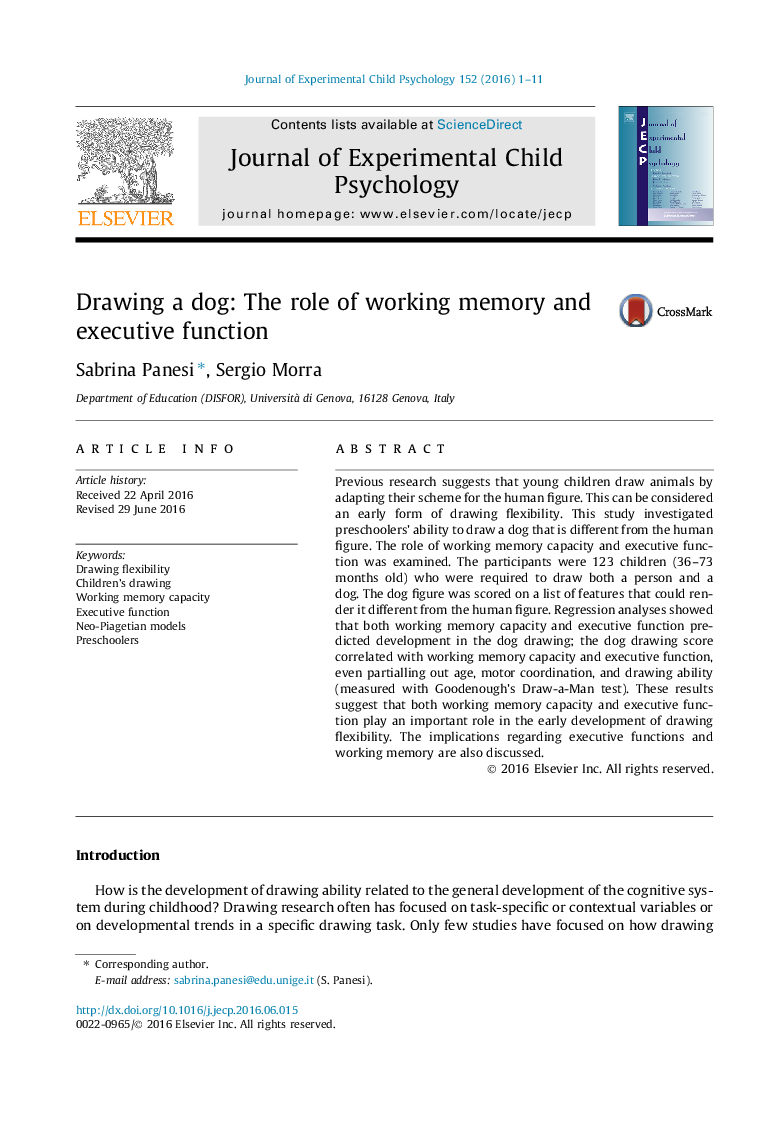| Article ID | Journal | Published Year | Pages | File Type |
|---|---|---|---|---|
| 917843 | Journal of Experimental Child Psychology | 2016 | 11 Pages |
•A scoring system is proposed for young children’s drawings of dogs.•The score is based on the differences between the dog and the human figure drawing.•This scoring system is highly reliable.•Working memory capacity is the main predictor of dog drawing scores from 3 to 6.•Executive function also accounts independently for some variance in the dog drawing.
Previous research suggests that young children draw animals by adapting their scheme for the human figure. This can be considered an early form of drawing flexibility. This study investigated preschoolers’ ability to draw a dog that is different from the human figure. The role of working memory capacity and executive function was examined. The participants were 123 children (36–73 months old) who were required to draw both a person and a dog. The dog figure was scored on a list of features that could render it different from the human figure. Regression analyses showed that both working memory capacity and executive function predicted development in the dog drawing; the dog drawing score correlated with working memory capacity and executive function, even partialling out age, motor coordination, and drawing ability (measured with Goodenough’s Draw-a-Man test). These results suggest that both working memory capacity and executive function play an important role in the early development of drawing flexibility. The implications regarding executive functions and working memory are also discussed.
